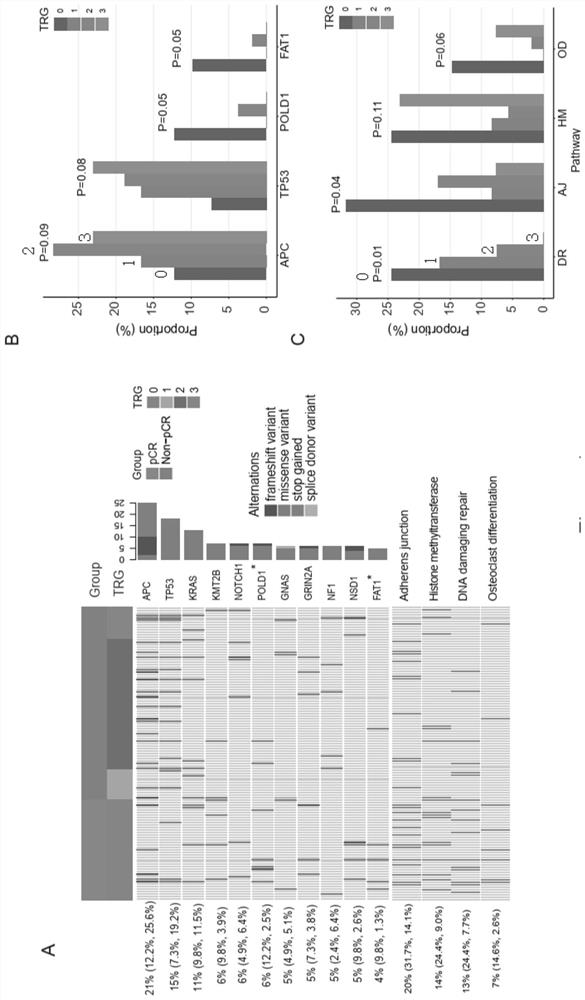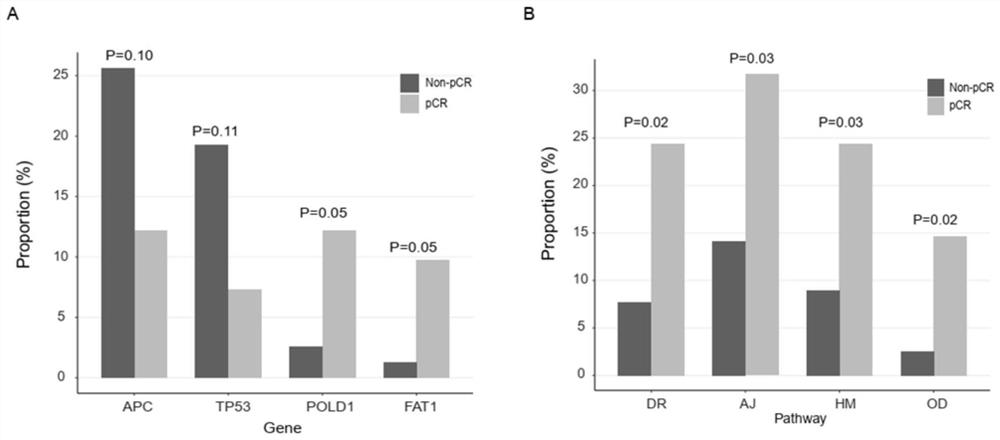Molecular marker related to rectal cancer and application thereof
A rectal cancer and reagent technology, applied in the field of medical molecular biology, can solve the problems that the potential role of ctDNA has not been fully evaluated, and few studies have explored the role of ctDNA
- Summary
- Abstract
- Description
- Claims
- Application Information
AI Technical Summary
Problems solved by technology
Method used
Image
Examples
Embodiment Construction
[0056] In order to confirm the feasibility and effectiveness of ctDNA dynamic monitoring in the efficacy evaluation and prognosis prediction of neoadjuvant chemotherapy and radiotherapy (nCRT) in locally advanced rectal cancer (LARC). We have carried out two key designs for the study. The first one is to use a large panel of 425 cancer-related genes with whole exons instead of a small panel of a few hotspot genes for ctDNA detection. In this way, not only single gene mutations and The correlation between the efficacy of nCRT and the correlation between the genetic variation of multiple signaling pathways and the efficacy of nCRT were also obtained. The second is to set multiple monitoring time points (4 time points) before surgery, combined with a large panel of 425 genes, and simultaneously monitor the elimination of mutations in ctDNA and the dynamic changes of acquired mutations. demonstrates the value of ctDNA dynamic monitoring in nCRT response prediction and provides new...
PUM
 Login to View More
Login to View More Abstract
Description
Claims
Application Information
 Login to View More
Login to View More - R&D
- Intellectual Property
- Life Sciences
- Materials
- Tech Scout
- Unparalleled Data Quality
- Higher Quality Content
- 60% Fewer Hallucinations
Browse by: Latest US Patents, China's latest patents, Technical Efficacy Thesaurus, Application Domain, Technology Topic, Popular Technical Reports.
© 2025 PatSnap. All rights reserved.Legal|Privacy policy|Modern Slavery Act Transparency Statement|Sitemap|About US| Contact US: help@patsnap.com



